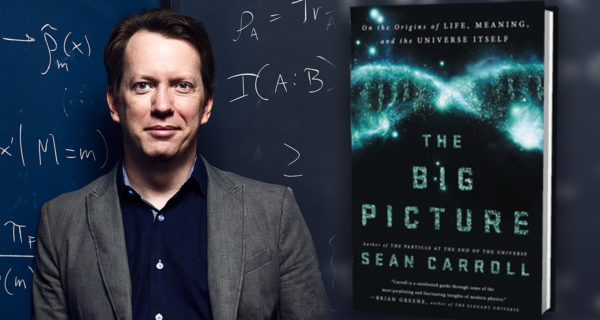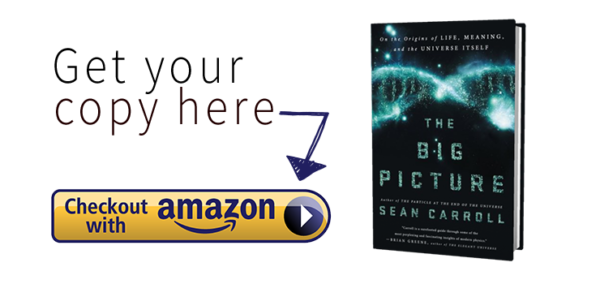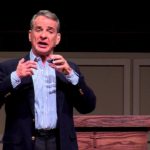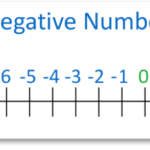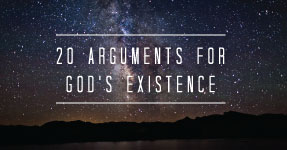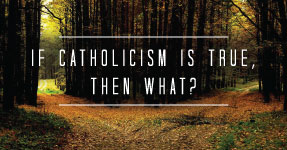Why Sean Carroll’s “The Big Picture” Is Too Small
by Brandon Vogt
Filed under Atheism, Christianity and Science, Cosmology
Physicist Sean Carroll has a high reputation in the scientific and atheist communities, and it's well-deserved. He's produced several acclaimed books on the philosophy of time, the Higgs Boson particle, and general relatively.
But none of his past books has been as daring or sweeping as his latest project, The Big Picture: On the Origins of Life, Meaning, and the Universe Itself (Dutton, 2016). One reviewer for Nature began by stating, "I don't think I have ever read anything with a bigger ambition than The Big Picture." Just look at the subtitle!
Carroll doesn't hide his lofty ambitions. In one interview he suggested "the book should accompany the Gideons Bible in all hotel rooms in the world." In other words, he hopes this book rivals the impact of the most influential book in human history.
In the months before its release, blogs, forums, Facebook pages, and comment boxes buzzed with anticipation. The Big Picture launched as the #1 bestseller in several Amazon categories including Physics and Cosmology, and almost cracked the Top 100 of all books on Amazon.
Even before reading it, some christened it a manifesto for naturalism, the belief, often associated with atheism, that nothing exists beyond the natural world. Many envisioned the book as the definitive, scientific refutation of theism and/or supernaturalism. (In discussions here at Strange Notions, more than one commenter has confidently said, in effect, "....just wait until Sean Carroll's book comes out—he'll address that issue.")
It's easy to see why Carroll, an unbeliever who claims "almost all cosmologists are atheists," has become such an important figure for atheists. He's smart, articulate, funny, and has impressive scientific credentials.
Even as a theist, I like him a lot; he's one of my favorite atheist writers. First, he's irenic. When reading his books and blog, you rarely see the angry, boorish rhetoric found among many New Atheist writers. You sense Carroll is far more interested in facts than insulting people who disagree with him. (He's also one of the few theoretical cosmologists to have appeared on "The Colbert Report.")
Second, he writes with clarity and verve. Most scientific writing is boring, even for specialists. But Carroll's work sparkles with excitement, and he makes even the most difficult problems in theoretical physics graspable for laymen like me.
Third, he respects philosophy. While scientists like Stephen Hawking, Richard Dawkins, and Neil deGrasse Tyson have suggested philosophy is dead, Carroll penned a viral article chiding their "lazy critiques" of philosophy. It's titled "Physicists Should Stop Saying Silly Things about Philosophy", and he affirms the principle that everyone does philosophy. But while some do it well, others do it badly—and some do it badly without even knowing it (the worst of all.)
Finally, Carroll has no animus against religion. He never suggests that religion is dangerous (ala Hitchens), abusive (ala Dawkins), or a sign of mental illness (ala Sam Harris.) As a naturalist, he thinks people who believe in God are wrong, of course, but he recognizes the positive ways that religion shapes people's lives. (In fact, as of writing this post, Carroll's latest blog entry is one praising the Catholic priest who formulated the Big Bang model. There's a notable absence of any science vs. religion rhetoric.)
Carroll first came on my radar a couple years ago when he debated William Lane Craig during the 2014 Greer Heard Forum. It was a spectacular exchange. The topic was "God and Cosmology: The Existence of God in Light of Contemporary Cosmology", and I thought Carroll handled himself better than any atheist who has ever shared the floor with Craig. (Although, in my view, Craig ably handled Carroll's objections and offered his own solid arguments, which Carroll failed to refute. Watch the debate on YouTube or check out the book based on the event, God and Cosmology: William Lane Craig and Sean Carroll in Dialogue.)
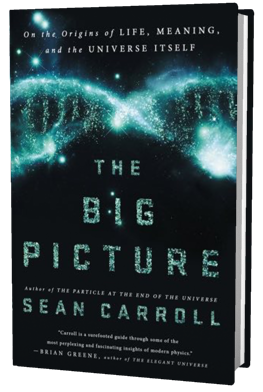 With all that in mind, I was almost as eager as my atheist friends to read Carroll's new book. With a subtitle promising to explore life, meaning, and the universe itself, all from a naturalistic point of view, I was excited to learn about Carroll's "Big Picture."
With all that in mind, I was almost as eager as my atheist friends to read Carroll's new book. With a subtitle promising to explore life, meaning, and the universe itself, all from a naturalistic point of view, I was excited to learn about Carroll's "Big Picture."
But after reading the book—two times now—I'm left somewhat disappointed. Why?
The book is too small.
By that, I don't mean physically. At a hefty 470 pages with 50 chapters, it's not suffering for girth. But it's small in the sense of Hamlet's reply to Horatio: "There are more things in heaven and earth, Horatio, than are dreamt of in your philosophy." Carroll believes just the opposite. He thinks there are fewer things, or fewer kinds of things, in heaven and earth (or in objective reality) than in most people's beliefs. Carroll is a reductionist.
This is evident from Carroll's master idea throughout the book, something he calls "poetic naturalism." This is the lens through which he views all other topics. In one sense, poetic naturalism is expansive, at least relative to traditional naturalism. It seeks to expand our understanding of the world by refusing to reduce all knowledge to a small set of fundamental stories (typically the stories told by fundamental physics.) On the other hand, poetic naturalism is still reductive. As a form of naturalism, it precludes any supernatural explanations (or "stories," to use Carroll's language.) Thus, it's a small worldview, albeit a milder reductionism, offering a "small picture" of the world relative to the truly "Big Picture" offered by theism.
With his poetic naturalism framework in mind, Carroll divides The Big Picture into six parts:
- Part 1 - Cosmos (aka cosmology)
- Part 2 - Understanding (aka epistemology)
- Part 3 - Essence (aka ontology)
- Part 4 - Complexity (aka biology/evolution/teleology)
- Part 5 - Thinking (aka consciousness)
- Part 6 - Caring (aka morality)
In the book's Prologue, Carroll notes that he had two goals in writing the book: first to "explain the story of our universe and why we think it's true", second to "offer a bit of existential therapy...to face reality with a smile, and to make our lives into something valuable" (3).
It would take a whole book to fairly engage all the ideas in such a broad-reaching scope, but over the next few weeks I'll review a handful of important sections that should be especially interesting to Strange Notions readers.
Tomorrow we'll begin with Carroll's first chapter on "The Fundamental Nature of Reality" along with a deeper exploration of poetic naturalism. Stay tuned!
(PS. I'm hoping to get Sean here for an #AMA with Strange Notions readers. I know we'd get some great questions and answers. Hopefully we can make that happen!)
Related Posts
Note: Our goal is to cultivate serious and respectful dialogue. While it's OK to disagree—even encouraged!—any snarky, offensive, or off-topic comments will be deleted. Before commenting please read the Commenting Rules and Tips. If you're having trouble commenting, read the Commenting Instructions.




